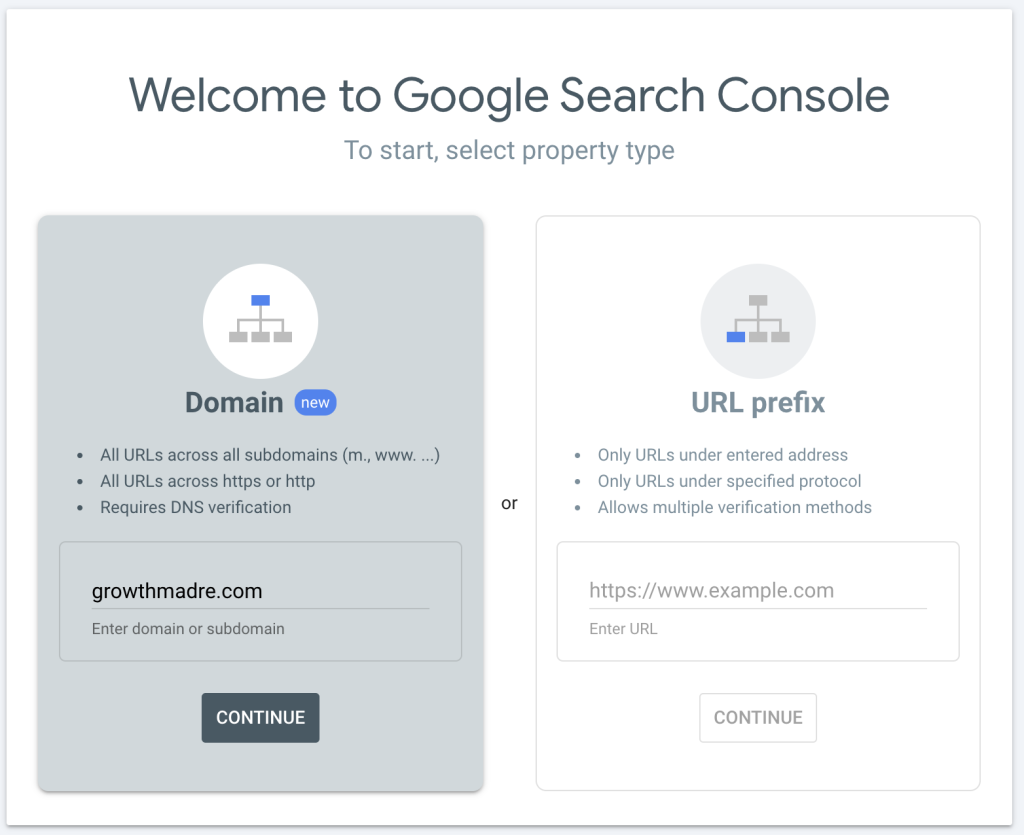Google Search Console (GSC) is a free Google tool that helps you monitor and optimize your website’s performance in Google search results. Essential for webmasters, SEO experts, and marketers, GSC provides crucial data on indexing status, organic traffic, crawling errors, and mobile usability.
Why Google Search Console is Crucial for SEO Success
- Track and Improve SEO Performance: GSC allows you to analyze your website’s rankings, click-through rates (CTR), impressions, and average position in Google search results.
- Detect and Fix Technical SEO Issues: Identifies crawling errors, indexing problems, and mobile usability issues with actionable insights.
- Ensure Proper Indexing in Google: Monitor how Google crawls and indexes your website to improve visibility.
- Boost Your Backlink Strategy: Provides detailed insights on internal and external links to refine your SEO strategy.
- Get Security and Penalty Alerts: Notifies you about potential security threats such as hacking or malware.
- Optimize for Rich Results and Structured Data: Analyzes structured data errors and the performance of rich snippets to enhance SERP appearance.
How to Set Up Google Search Console for Your Website
- Sign Up for Google Search Console: Visit Google Search Console and sign in with your Google account.
- Add Your Website (Property):
- Choose either “Domain” or “URL Prefix” option.
- Domain: Covers all subdomains and protocols, requires DNS verification.
- URL Prefix: Specific to the entered URL, can be verified via HTML file, HTML tag, Google Analytics, or Google Tag Manager.
- Verify Website Ownership: Follow the recommended verification method to gain full access to GSC data.

When adding your website to Google Search Console, you can choose between two verification methods: Domain or URL Prefix.
Essential Google Search Console Settings After Setup
- Submit Your Sitemap for Faster Indexing:
- Navigate to “Sitemaps” and submit your
sitemap.xmlfile. - Helps Google crawl and index your site efficiently.
- Navigate to “Sitemaps” and submit your
- Use URL Inspection Tool for Indexing Checks:
- Ensure new pages are properly indexed.
- Request manual indexing for missing pages.
- Run a Mobile Usability Test:
- Check if your site is mobile-friendly via the “Mobile Usability” section.
- Fix any detected issues for better mobile performance.
- Analyze Backlinks and Internal Links:
- Use the “Links” section to improve SEO strategy based on inbound and outbound links.
- Monitor Performance Metrics and SEO KPIs:
- Review impressions, clicks, CTR, and rankings.
- Optimize underperforming pages with data-driven improvements.
- Identify and Fix Crawling & Indexing Issues:
- Use “Index Coverage” to detect 404 errors or incorrect redirects.
- Ensure proper indexing of all important pages.
- Check for Security Issues and Google Penalties:
- Review “Security & Manual Actions” to protect your site from hacks and penalties.
How to Redirect HTTP to HTTPS & Optimize Search Console Settings
- Install an SSL Certificate for HTTPS Security:
- Get and install an SSL certificate to enable HTTPS.
- Free SSL options like Let’s Encrypt are available via most hosting providers.
- Implement 301 Redirects from HTTP to HTTPS:
- Use a 301 redirect in your
.htaccessfile (for Apache) or server configuration (NGINX, IIS) to enforce HTTPS. - Example Apache
.htaccessrule:RewriteEngine On RewriteCond %{HTTPS} off RewriteRule ^(.*)$ https://%{HTTP_HOST}/$1 [R=301,L]
- Use a 301 redirect in your
- Update Google Search Console with HTTPS Version:
- Add the HTTPS version of your site as a new property.
- Verify ownership again since Google treats HTTP and HTTPS as separate entities.
- Submit a new sitemap with HTTPS URLs.
- Use the URL Inspection tool to confirm Google indexes HTTPS correctly.
- Update Internal Links, Canonicals & External Tools:
- Ensure all internal links point to HTTPS versions.
- Update canonical tags, hreflang attributes, and external tools referencing HTTP URLs.
- Monitor HTTPS Implementation via Search Console:
- Check for mixed content errors (where resources still load via HTTP).
- Use “Security & Manual Actions” to ensure there are no security concerns.
Google Search Console is a must-have tool for improving your website’s organic performance and search engine visibility. Regular monitoring and optimization will help you rank higher and stay ahead of SEO challenges.

